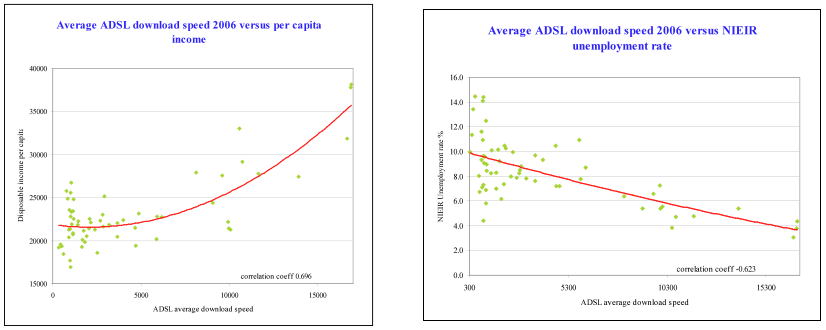Study quantifies impact of Broadband on GDP
A new report, released in September of this year, conducted jointly by Ericsson (NASDAQ:ERIC), Arthur D. Little and Chalmers University of Technology in 33 OECD countries, quantifies the isolated impact of broadband speed, showing that doubling the broadband speed for an economy increases GDP by 0.3%.
A 0.3 percent GDP growth in the OECD region is equivalent to USD 126 billion. This corresponds to more than one seventh of the average annual OECD growth rate in the last decade.
At a local level we know that such infrastructure and access is critical to the long-term well being of regions.
In work completed by Peter Brain and National Economics over many years, including the “State of the Regions” report [SOR] we have known of the relationship [for example] between ADSL speeds and per-capita income or ADSL speeds and the NIEIR unemployment rate. This is [perhaps] obvious [now] but still poorly understood and demonstrated when it comes to discussions about “national skills” or the “urban/regional divide” debates in modern policy positions.

National Economics modelling showed that lagging regions have poor access to quality telecommunications infrastructure, preventing efficient internet usage and, therefore, reducing the possibilities for exporting and attracting high technology firm start-ups. Low productivity/economic regions have relatively high local government tax rates because the cost of delivering basic services to the community is relatively high.
The OECD research further confirms these relationships. The National Broadband Network and those working to improve the links for regional Australia in to a modern skills base, including regional and local councils, will do well to stay focussed on such research.
It’s worth the read.
Links:


